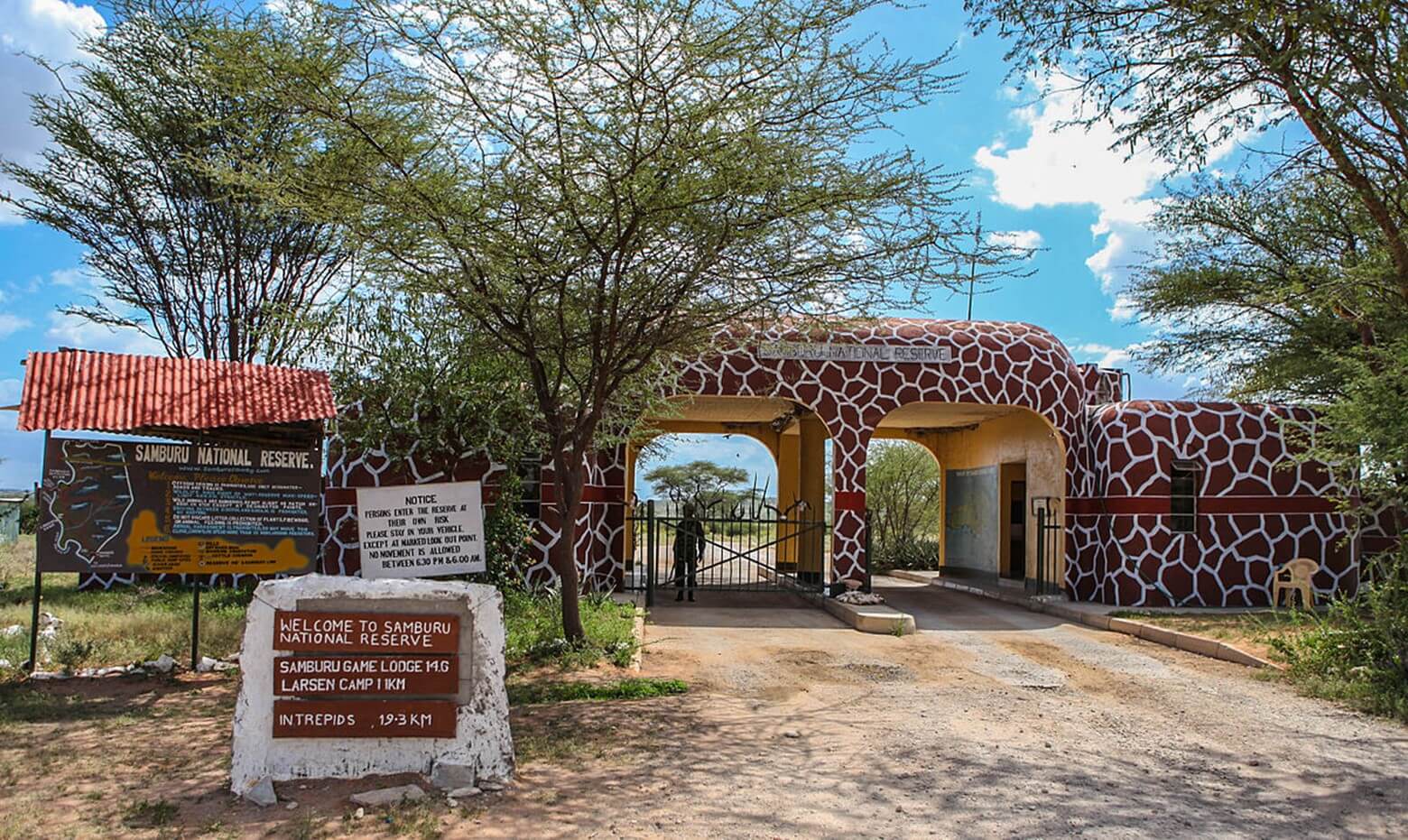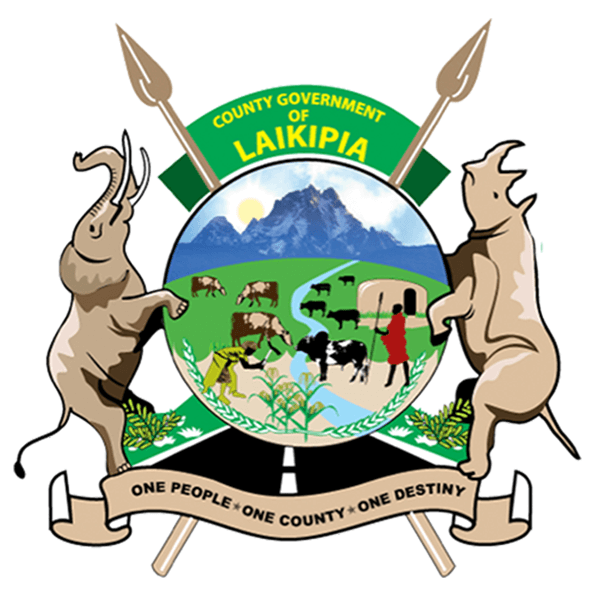Tourism Attractions
a) Samburu National Reserve

The Samburu National Reserve is a game reserve on the banks of the Ewaso Ng’iro river in Kenya. On the other side of the river is the Buffalo Springs National Reserve. The park is 165 km² in size and is situated 350 kilometers from Nairobi.
In the middle of the reserve, the Ewaso Ng’iro flows through doum palm groves and thick riverine forests. It provides water, without which the game in this arid region could not survive.
Samburu National Reserve can be entered via the Ngare Mare and Buffalo Springs gates. Once inside the reserve, there are two mountains visible: Koitogor and Ololokwe. Samburu National Reserve is very peaceful and attracts animals because of the Ewaso Ng’iro river (meaning “brown water” and pronounced U-aa-so-Nyee-ro) that runs through it and the mixture of acacia, riverine forest, thorn trees and grassland vegetation. The Ewaso Ng’iro flows from the Kenyan highlands and empties into the famous Lorian Swamp. The natural serenity that is evident here is due to its distance from industry and the inaccessibility of the reserve for many years.
There is a wide variety of animal and bird life seen at Samburu National Reserve. Several large game species common to Kenya’s northern plains can be found in abundance here, including the following dry-country fauna: gerenuk, Grevy’s zebra, oryx and reticulated giraffe. All three big cats, the lion, cheetah and African leopard can also be found here, as well as the elephant, Cape buffalo and hippopotamus.
Other mammals frequently seen in the park include olive baboon, warthogs, Grant’s gazelle, Kirk’s dik-dik, impala, and waterbuck. A black rhinoceros population has been re-introduced into the park after an absence of 25 years due to heavy poaching.
There are over 350 species of bird. These include grey-headed kingfisher, sunbirds, bee-eaters, Marabou stork, tawny eagle, Verreaux’s eagle, bateleur, vulturine guineafowl, yellow-necked spurfowl, lilac-breasted roller, secretary bird, superb starling, northern red-billed hornbill, yellow-billed hornbill, and various vultures including the palm-nut vulture.
The Ewaso Ng’iro river contains large numbers of Nile crocodile basks.
Since 2005, the protected area is considered part of a Lion Conservation Unit.
b) Reteti Elephant Sanctuary

The Sanctuary takes in orphaned and abandoned elephant calves with the aim to release them back into the wild herds adjoining Reteti.
This is the result of a widely recognised and expanding grassroots movement of community-driven conservation across Northern Kenya; a movement that is growing new economies, transforming lives and conserving natural resources.
c) Kalama Community Conservancy
The Kalama conservancy is a Gir gir group ranch initiative that was established to provide an alternative source of income in addition to livestock keeping. The conservancy began in 2001 with 16,000 hectares set aside for conservation, 6,000 of which were designated as core conservation areas. During the dry season, livestock grazing is permitted in the buffer zone, but it is not permitted in the core conservation area. Although the conservancy is home to Grevy’s zebras, elephants, and reticulated giraffes, among other animals, and serves as a vital wildlife corridor for animals migrating between the Samburu and Marsabit areas, the animals are much less visible than in Samburu due to the drier habitat. To visit, you must stay at the lodge or reserve a campsite.






